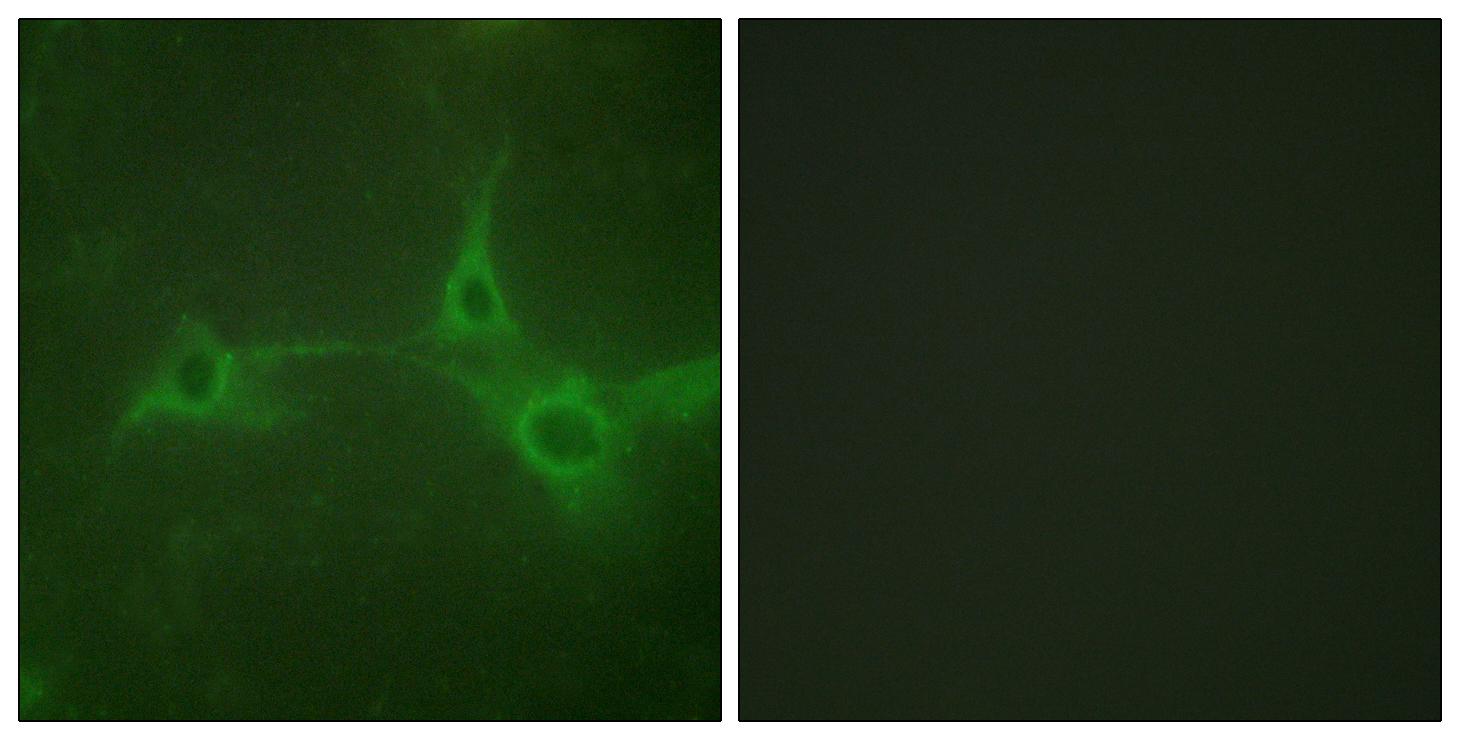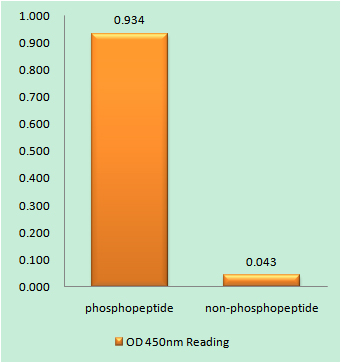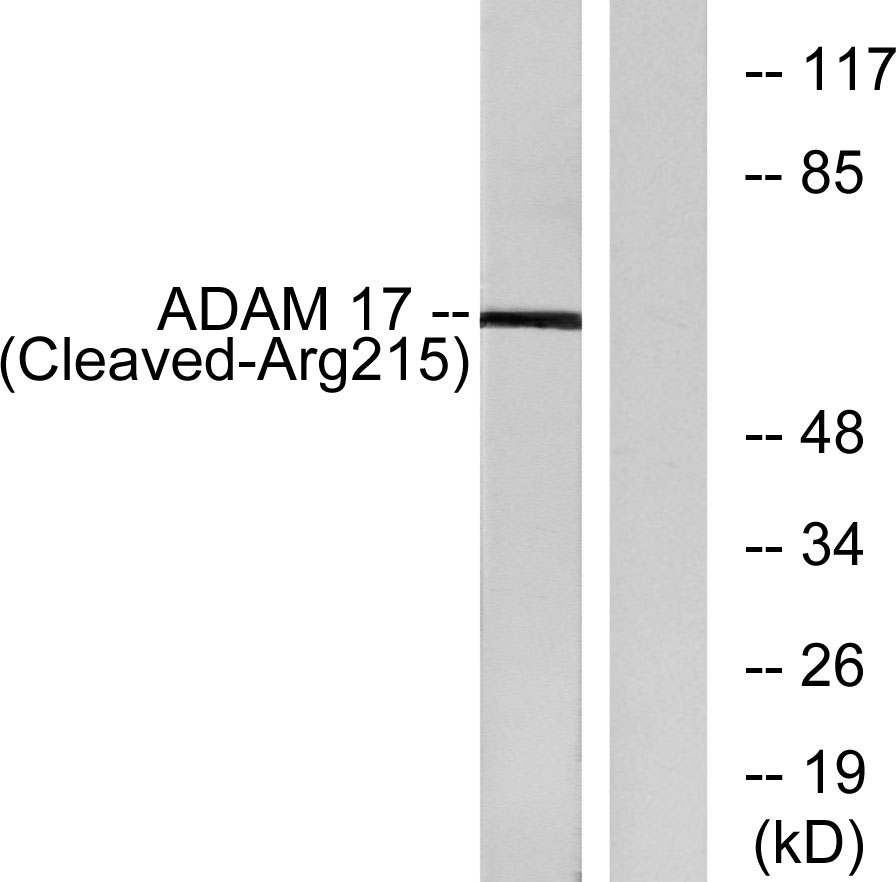
Catalog: YT4523
Size
Price
Status
Qty.
200μL
$450.00
In stock
0
100μL
$280.00
In stock
0
40μL
$150.00
In stock
0
Add to cart


Collected


Collect
Main Information
Target
TACE
Host Species
Rabbit
Reactivity
Human, Mouse, Rat
Applications
IF, ELISA
MW
93kD (Calculated)
Conjugate/Modification
Unmodified
Detailed Information
Recommended Dilution Ratio
IF 1:200-1:1000; ELISA 1:5000; Not yet tested in other applications;
Formulation
Liquid in PBS containing 50% glycerol, 0.5% BSA and 0.02% sodium azide.
Specificity
TACE Polyclonal Antibody detects endogenous levels of TACE protein.
Purification
The antibody was affinity-purified from rabbit antiserum by affinity-chromatography using epitope-specific immunogen.
Storage
-15°C to -25°C/1 year(Do not lower than -25°C)
Concentration
1 mg/ml
MW(Calculated)
93kD
Modification
Unmodified
Clonality
Polyclonal
Isotype
IgG
Related Products
Antigen&Target Information
Immunogen:
The antiserum was produced against synthesized peptide derived from human ADAM 17. AA range:701-750
show all
Specificity:
TACE Polyclonal Antibody detects endogenous levels of TACE protein.
show all
Gene Name:
ADAM17
show all
Protein Name:
Disintegrin and metalloproteinase domain-containing protein 17
show all
Other Name:
ADAM17 ;
CSVP ;
TACE ;
Disintegrin and metalloproteinase domain-containing protein 17 ;
ADAM 17 ;
Snake venom-like protease ;
TNF-alpha convertase ;
TNF-alpha-converting enzyme ;
CD antigen CD156b
CSVP ;
TACE ;
Disintegrin and metalloproteinase domain-containing protein 17 ;
ADAM 17 ;
Snake venom-like protease ;
TNF-alpha convertase ;
TNF-alpha-converting enzyme ;
CD antigen CD156b
show all
Database Link:
Background:
ADAM metallopeptidase domain 17(ADAM17) Homo sapiens This gene encodes a member of the ADAM (a disintegrin and metalloprotease domain) family. Members of this family are membrane-anchored proteins structurally related to snake venom disintegrins, and have been implicated in a variety of biologic processes involving cell-cell and cell-matrix interactions, including fertilization, muscle development, and neurogenesis. The encoded preproprotein is proteolytically processed to generate the mature protease. The encoded protease functions in the ectodomain shedding of tumor necrosis factor-alpha, in which soluble tumor necrosis factor-alpha is released from the membrane-bound precursor. This protease also functions in the processing of numerous other substrates, including cell adhesion proteins, cytokine and growth factor receptors and epidermal growth factor (EGF) receptor ligands. The encoded protein also plays a prominent role in the activation o
show all
Function:
Catalytic activity:Narrow endopeptidase specificity. Cleaves Pro-Leu-Ala-Gln-Ala-|-Val-Arg-Ser-Ser-Ser in the membrane-bound, 26-kDa form of tumor necrosis factor alpha (TNF-alpha). Similarly cleaves other membrane-anchored, cell-surface proteins to 'shed' the extracellular domains.,cofactor:Binds 1 zinc ion per subunit.,Domain:Must be membrane anchored to cleave the different substrates. The cytoplasmic domain is not required for the this activity. Only the catalytic domain is essential to shed TNF and p75 TNFR.,Domain:The conserved cysteine present in the cysteine-switch motif binds the catalytic zinc ion, thus inhibiting the enzyme. The dissociation of the cysteine from the zinc ion upon the activation-peptide release activates the enzyme.,Function:Cleaves the membrane-bound precursor of TNF-alpha to its mature soluble form. Responsible for the proteolytic release of several other cell-surface proteins, including p75 TNF-receptor, interleukin 1 receptor type II, p55 TNF-receptor, transforming growth factor-alpha, L-selectin, growth hormone receptor, MUC1 and the amyloid precursor protein. Also involved in the activation of Notch pathway.,induction:In arthritis-affected cartilage.,online information:Tumor necrosis factor alpha-converting enzyme entry,PTM:Phosphorylated. Stimulation by growth factor or phorbol 12-myristate 13-acetate induces phosphorylation of Ser-819 but decreases phosphorylation of Ser-791.,PTM:The precursor is cleaved by a furin endopeptidase.,similarity:Contains 1 disintegrin domain.,similarity:Contains 1 peptidase M12B domain.,subunit:Interacts with MAD2L1 and MUC1.,tissue specificity:Ubiquitously expressed. Expressed at highest levels in adult heart, placenta, skeletal muscle, pancreas, spleen, thymus, prostate, testes, ovary and small intestine, and in fetal brain, lung, liver and kidney.,
show all
Cellular Localization:
Membrane; Single-pass type I membrane protein.
show all
Tissue Expression:
Ubiquitously expressed. Expressed at highest levels in adult heart, placenta, skeletal muscle, pancreas, spleen, thymus, prostate, testes, ovary and small intestine, and in fetal brain, lung, liver and kidney. Expressed in natural killer cells (at protein level) (PubMed:24337742).
show all
Research Areas:
>>Notch signaling pathway ;
>>Alzheimer disease ;
>>Epithelial cell signaling in Helicobacter pylori infection ;
>>Coronavirus disease - COVID-19
>>Alzheimer disease ;
>>Epithelial cell signaling in Helicobacter pylori infection ;
>>Coronavirus disease - COVID-19
show all
Signaling Pathway
Reference Citation({{totalcount}})
Catalog: YT4523
Size
Price
Status
Qty.
200μL
$450.00
In stock
0
100μL
$280.00
In stock
0
40μL
$150.00
In stock
0
Add to cart


Collected


Collect
Recently Viewed Products
Clear allPRODUCTS
CUSTOMIZED
ABOUT US
Toggle night Mode
{{pinfoXq.title || ''}}
Catalog: {{pinfoXq.catalog || ''}}
Filter:
All
{{item.name}}
{{pinfo.title}}
-{{pinfo.catalog}}
Main Information
Target
{{pinfo.target}}
Reactivity
{{pinfo.react}}
Applications
{{pinfo.applicat}}
Conjugate/Modification
{{pinfo.coupling}}/{{pinfo.modific}}
MW (kDa)
{{pinfo.mwcalc}}
Host Species
{{pinfo.hostspec}}
Isotype
{{pinfo.isotype}}
Product {{index}}/{{pcount}}
Prev
Next
{{pvTitle}}
Scroll wheel zooms the picture
{{pvDescr}}


















